PRINCE2 Agile course Southampton
PRINCE2 Agile training in Southampton teaches you how to integrate modern agile tools and techniques with the reliable governance of the PRINCE2 method.
An agile approach is an ideal way to improve collaboration and communication in a dynamic development team. PRINCE2 and agile are the perfect match, providing the benefits of both traditional project management and iterative development.
PRINCE2 Agile Practitioner certification Southampton
PRINCE2 Agile Foundation & Practitioner online courses
Learn through either a self-paced online course or virtual classroom. Earn both PRINCE2 Agile Foundation and Practitioner qualifications with this combined PRINCE2 Agile course. A PRINCE2 Agile certification demonstrates your ability to apply agile best practices to any project, regardless of scope or complexity. Courses are based on the latest edition of the PRINCE2 Agile handbook. PRINCE2 Agile Foundation exam and PRINCE2 Agile Practitioner exam included.
- Earn both entry-level and intermediate PRINCE2 qualifications at reduced cost
- Our expert agile trainers will teach you an applicable understanding of key agile concepts and how these blend seamlessly into the PRINCE2 methodology.
Accreditation: AXELOS
Pre-requisites: None
Format: Online self-study course or classroom course
PRINCE2 Agile Practitioner self-paced courses
Learn to adapt your project management approach, incorporate contemporary agile tools, and improve productivity. Earning your PRINCE2 Agile Practitioner qualification shows employers that you can deliver value to stakeholders early while mitigating risk, making you a highly desirable candidate for any agile project management role.
This course is based on the latest edition of the PRINCE2 Agile handbook. PRINCE2 Agile Practitioner exam included.
- The PRINCE2 Agile Practitioner syllabus helps you adapt your agile management approach to suit projects of varying size and complexity
- Our self-study courses are designed with the aid of agile experts so you can pass your Practitioner exam with ease!
Accreditation: AXELOS
Pre-requisites: PRINCE2 Foundation or PRINCE2 Agile Foundation
Format: Online self-study course
PRINCE2 Agile Practitioner classroom course in Southampton
Study advanced PRINCE2 Agile concepts with the help of a professional PRINCE2 Agile trainer. Our virtual classrooms deliver all the benefits of in-person training without the hassle of travel or accommodation. PRINCE2 Agile Practitioner qualifications are a must-have for PRINCE2 project managers who want to improve their marketability as project managers. This course in Southampton is based on the latest edition of the PRINCE2 Agile handbook. Agile Practitioner exam included.
- PRINCE2 Agile Practitioner trainer teaches you how to apply lessons learned in the Foundation course in a practical and flexible way
- This qualification is a great way for you to enhance your CV and advance your career as a project manager.
Accreditation: AXELOS
Pre-requisites: PRINCE2 Foundation or PRINCE2 Agile Foundation
Format: Classroom course
PRINCE2 Agile Foundation certification Southampton
PRINCE2 Agile Foundation online course
PRINCE2 Agile Foundation training serves as an introduction to both PRINCE2 and Agile. You’ll learn an understanding of practical agile concepts and techniques, including Scrum, Kanban, Lean Start-up, and Cynefin. PRINCE2 Agile is suitable for anyone who supports agile projects or agile project managers within an agile project environment. This course is based on the latest edition of the PRINCE2 Agile manual. PRINCE2 Agile Foundation exam included.
- PRINCE2 Agile focus on the project and the outcome, ensuring fast delivery while reducing risk
- Our PRINCE2 Agile Foundation online courses are a great e-learning alternative for dispersed teams and students outside the UK.
Accreditation: AXELOS
Pre-requisites: None
Format: Online self-study course
PRINCE2 Agile Foundation classroom course in Southampton
Earn your PRINCE2 Agile Foundation qualification with training provided in Southampton by our own professional PRINCE2 Agile trainers. PRINCE2 Agile virtual training is a great way to train staff or study towards an intermediate PRINCE2 Agile Practitioner certification.
This course in Southampton is based on the latest edition of the PRINCE2 Agile guide. PRINCE2 Agile Foundation exam included.
- If you already use PRINCE2, PRINCE2 Agile is a good way to start introducing agile techniques without the need for wide-sweeping change initiatives
- Virtual training is a cost-effective distance learning alternative for those who enjoy learning in a social environment.
Accreditation: AXELOS
Pre-requisites: None
Format: Classroom course
More information about Southampton
Training in Southampton
Southampton is a port city in the county of Hampshire. It is located south coast of England, south-west of London and west of Portsmouth. The city forms part of the South Hampshire built-up area, which also covers Portsmouth and the towns of Havant, Waterlooville, Eastleigh, Fareham, and Gosport. If you’d like to attend training at our Southampton training centre, you can find us at Enterprise House, Ocean Village Marina, Southampton SO14 3XB, United Kingdom. We’re just a 30 minute walk from Southampton Central railway station, close to Injoy centre Southampton.
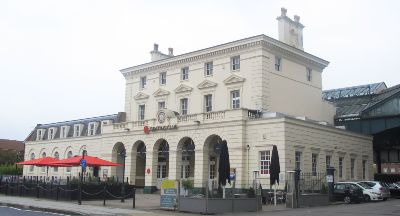
Travel to and from Southampton
Road
Southampton has good transport links with the rest of the country. The M27 motorway runs just to the north of the city. The M3 motorway links the city to London and the M271 motorway links the M27 with the Western Docks and city centre.
Southampton has good transport links with the rest of the country. The M27 motorway runs just to the north of the city. The M3 motorway links the city to London and the M271 motorway links the M27 with the Western Docks and city centre.
Rail
Southampton is served by a rail network used both by freight services and passenger services as part of the national rail system. The main station in the city is Southampton Central. Local train services operate in the city with stations at Swaythling, St Denys, Millbrook, Redbridge, Bitterne, Sholing and Woolston.
Southampton is served by a rail network used both by freight services and passenger services as part of the national rail system. The main station in the city is Southampton Central. Local train services operate in the city with stations at Swaythling, St Denys, Millbrook, Redbridge, Bitterne, Sholing and Woolston.
Air
Southampton Airport is a regional airport located in the town of Eastleigh. It offers flights to UK and near European destinations, and is connected to the city by rail service from Southampton Airport Parkway railway station.
Southampton Airport is a regional airport located in the town of Eastleigh. It offers flights to UK and near European destinations, and is connected to the city by rail service from Southampton Airport Parkway railway station.

Cruise shipping
Many of the world’s largest cruise ships can regularly be seen in Southampton water. At certain times of the year, the Queen Mary 2, Queen Elizabeth and Queen Victoria may all visit Southampton at the same time, in an event commonly called ‘Arrival of the Three Queens’.
Many of the world’s largest cruise ships can regularly be seen in Southampton water. At certain times of the year, the Queen Mary 2, Queen Elizabeth and Queen Victoria may all visit Southampton at the same time, in an event commonly called ‘Arrival of the Three Queens’.
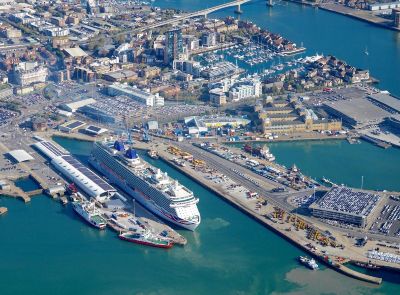
Bus
There are two bus networks within Southampton which are privately funded, the first being commissioned by the University of Southampton to provide transport from the university to the town, and another which runs between central station to Red Funnel’s port.
There are two bus networks within Southampton which are privately funded, the first being commissioned by the University of Southampton to provide transport from the university to the town, and another which runs between central station to Red Funnel’s port.
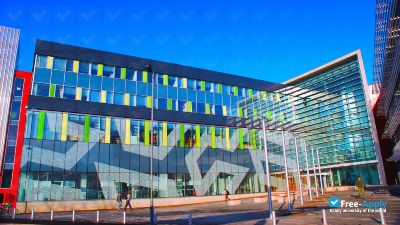
Things to do in Southampton
Museums
The city is home to the longest surviving stretch of medieval walls in England, as well as a number of museums including the Tudor House Museum, Southampton Maritime Museum, and the Medieval Merchant’s House.
The city is home to the longest surviving stretch of medieval walls in England, as well as a number of museums including the Tudor House Museum, Southampton Maritime Museum, and the Medieval Merchant’s House.

Theatres
The largest theatre in the city is Mayflower Theatre which receives regular visits from Welsh National Opera and English National Ballet. It is also the largest theatre in Southern England outside of London.
The largest theatre in the city is Mayflower Theatre which receives regular visits from Welsh National Opera and English National Ballet. It is also the largest theatre in Southern England outside of London.
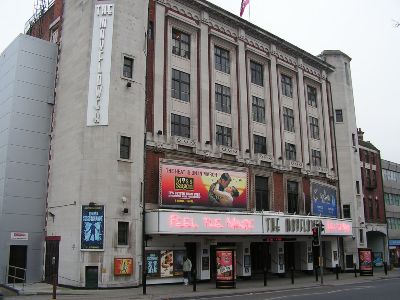
Art
There are many art galleries in the city. The best known is the Southampton City Art Gallery at the Civic Centre and the nationally important Designated Collection.
There are many art galleries in the city. The best known is the Southampton City Art Gallery at the Civic Centre and the nationally important Designated Collection.

Music
Southampton has two large live music venues, the Mayflower Theatre and the Guildhall, which have seen concerts from a wide range of popular artists The city also has several smaller music venues, including the Brook, Engine Rooms, The 1865, The Joiners and Turner Sims.
Southampton has two large live music venues, the Mayflower Theatre and the Guildhall, which have seen concerts from a wide range of popular artists The city also has several smaller music venues, including the Brook, Engine Rooms, The 1865, The Joiners and Turner Sims.
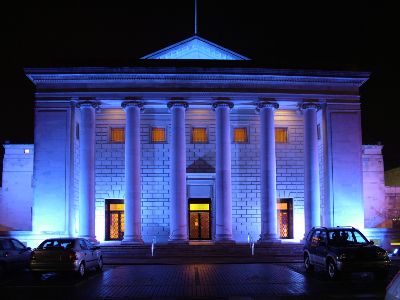
Sports
Southampton is home to Southampton Football Club. The club plays at St Mary’s Stadium, having from their former stadium, “The Dell”.
Southampton is home to Southampton Football Club. The club plays at St Mary’s Stadium, having from their former stadium, “The Dell”.

Hampshire County Cricket Club play at the Rose Bowl in West End. They previously played at the County Cricket Ground and the Antelope Ground. There is also a Southampton Evening Cricket League.
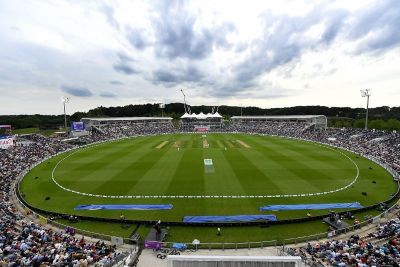
Southampton trivia
Southampton’s city walls include God’s House Tower – the first purpose-built artillery fortification in England.Over the years it has been used as the Town Gaol andas storage for the Southampton Harbour Board. After D-Day, Southampton docks handled military cargo to help keep the Allied forces supplied making it a key target of Luftwaffe bombing raids until late 1944.
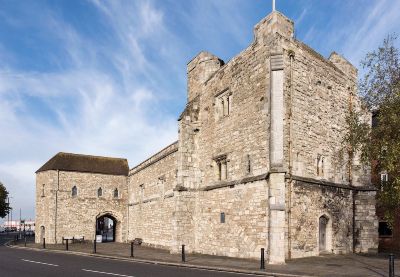
In 2016 the south section of West Quay, or West Quay South, originally known as West Quay Watermark, was opened to the public. Its public plaza has been used for several annual events, such as an ice-skating rink during the winter season.
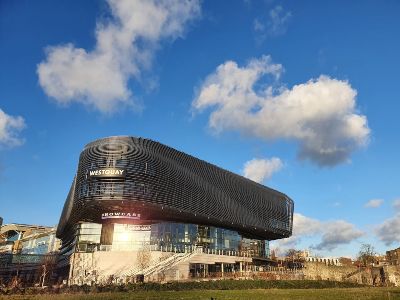
PRINCE2 Agile FAQs
PRINCE2 Agile helps facilitate lean-agile product development without sacrificing the reliability offered by traditional project management.
PRINCE2 Agile allows you to focus on management and product delivery with a suite of agile tools designed to help you manage and react to changing requirements.
PRINCE2 Agile has been developed in collaboration with veteran agile practitioners around the world. It works with all establish Agile approaches and agile tools, allowing easy integration into existing agile project management frameworks.
PRINCE2 Agile provides training and guidance highly focused on the agile environment. Earning your PRINCE2 Agile certification will teach you how project managers can remain a relevant and important part of agile product development and how a project manager can collaborate with staff in standard agile roles.
AXELOS calls PRINCE2 Agile "the world's most complete agile project management solution."
Based on the ideas first outlined in the Agile Manifesto, PRINCE2 Agile project management was developed in response to the changing nature of project management practices, new technologies, and new ways of thinking.
PRINCE2 Agile allows project managers to easily integrate Agile practices, tools and ways of working into existing project management frameworks without costly revisions to project lifecycles without the need to launch enterprise-wide change initiatives.
PRINCE2 Agile can also benefit agile managers who desire the reliability, governance, and oversight of the PRINCE2 method in complex projects.
Candidates who enrol in a PRINCE2 Agile Foundation course will learn how modern concepts aid the management of successful projects. Topics include the use of MoSCoW prioritisation, Kanban, Scrum and other tools, as well as unique agile roles such as the Scrum Master and Scrum Product Owner.
Candidates who attend PRINCE2 Agile Practitioner training will learn to seamlessly integrate agile practices with PRINCE2 governance and controls in agile environments.
PRINCE2 is a customer-focused project management methodology. It offers a set of principles, themes, and processes that helps organisations weigh the costs and risks of initiating a project. It helps the ongoing management of projects to ensure they remain a worthwhile investment.
Agile approaches do not focus on the value or management of a project as a whole. Instead, they focus on the development level, ensuring that any given product or service is delivered in the most efficient manner possible through an iterative cycle of development, testing, and analysing customer feedback.
While PRINCE2 enables the customer to remain focused on the project’s original business goals, Agile approaches are very responsive to changes in the project environment and customer requirements.
Utilising Agile approaches on PRINCE2 projects allows project managers to combine the structure and governance of PRINCE2 with the flexibility and responsiveness of Agile. PRINCE2 Agile training helps PRINCE2 project managers adapt their practices in agile ways.
Yes. Despite the common misconception that PRINCE2 struggles to adjust to changing business requirements, the PRINCE2 framework is, in fact, easy to adapt and tailor to suit any project environment.
PRINCE2 is sometimes described as having a prescriptive ‘waterfall’ approach, whereby requirements are documented and approved before moving to the design, build, and testing phase. This is, however, incorrect. PRINCE2 assumes that on many projects, requirements emerge and evolve as the project continues.
PRINCE2 manages project-level changes using its ‘change control’ approach. Smaller changes at the development level can easily be managed using the prioritisation techniques common in Agile approaches.
PRINCE2 Agile elaborates on the tools team leaders, and project managers can use at the development level to facilitate faster autonomous development.
It’s not accurate to compare PRINCE2 and Agile as equivalent project management solutions. For one, agile has nothing to do with project management. Instead, it focuses squarely on issues encountered by individuals and small teams at the development level.
PRINCE2, on the other hand, is generally more concerned with the ‘big questions’ like “Should we do this project?” “How do we avoid risks and failure” or “How can we be sure that 6 months from now this product will still be desirable?”
PRINCE2 and Agile are not competing methods. PRINCE2 Agile was developed specifically to show that they are complementary approaches to different problems.